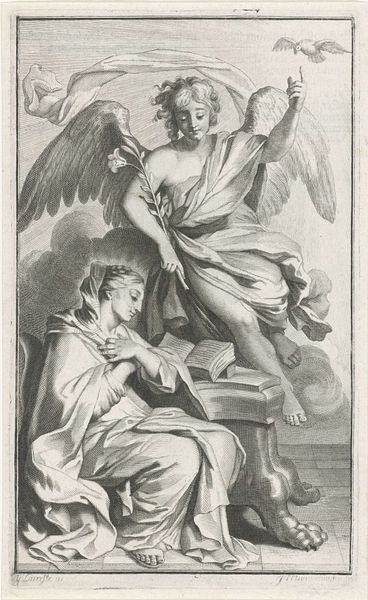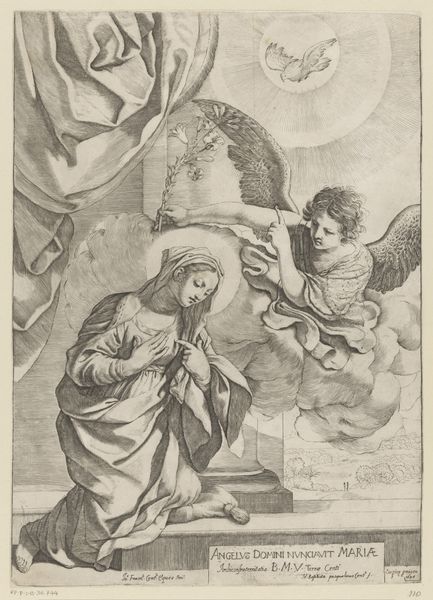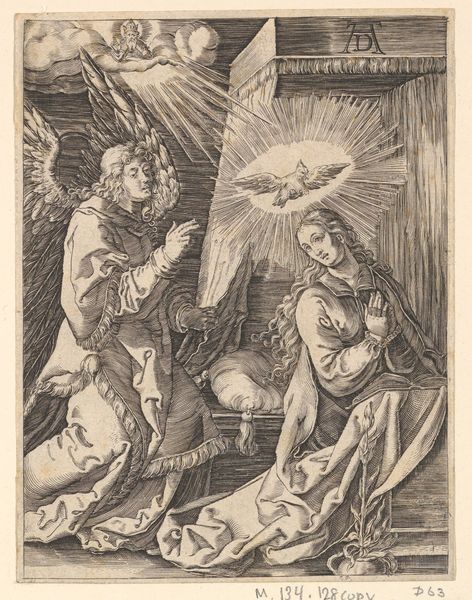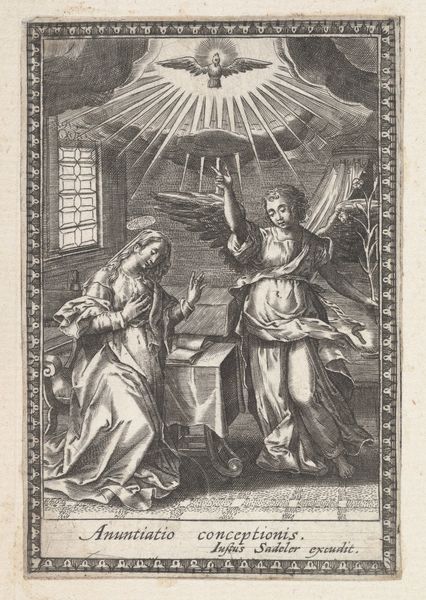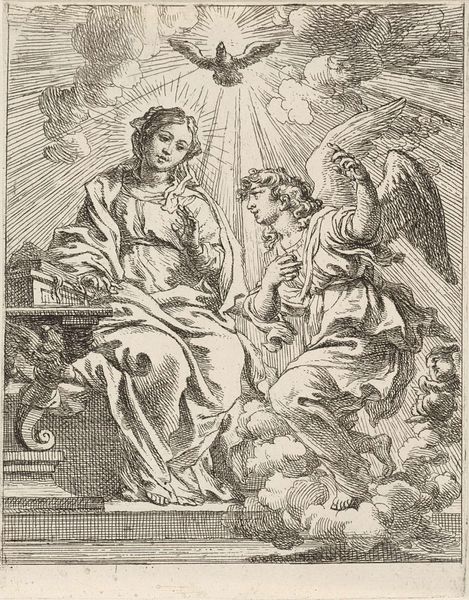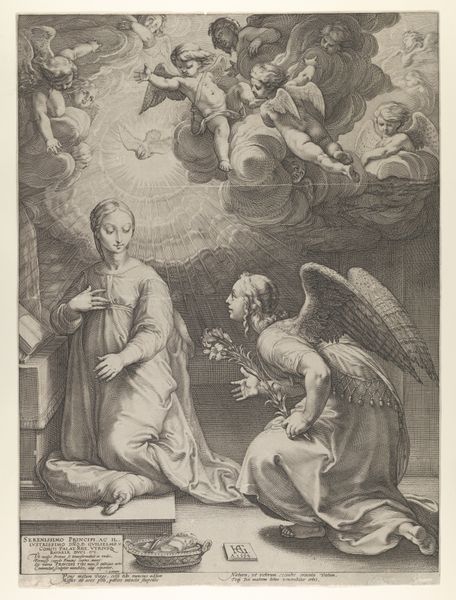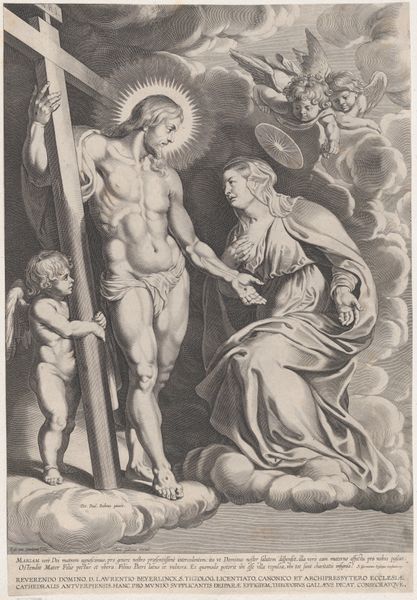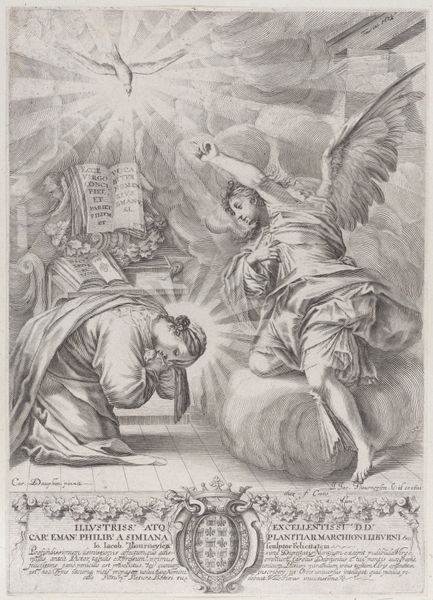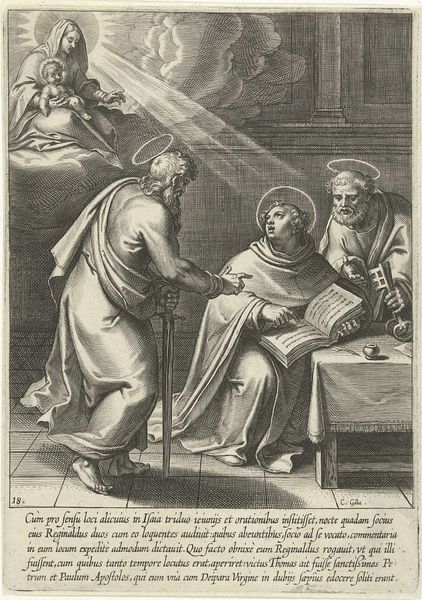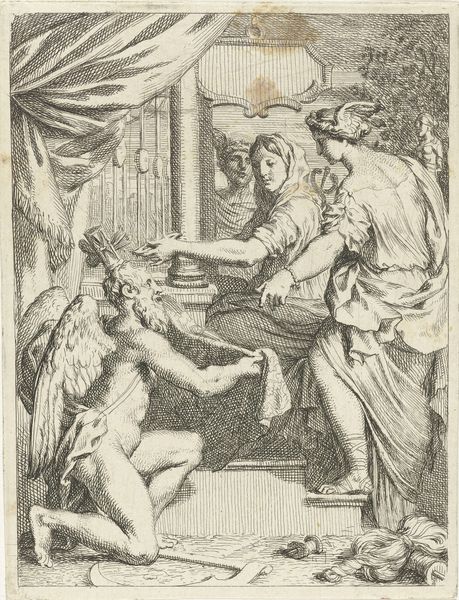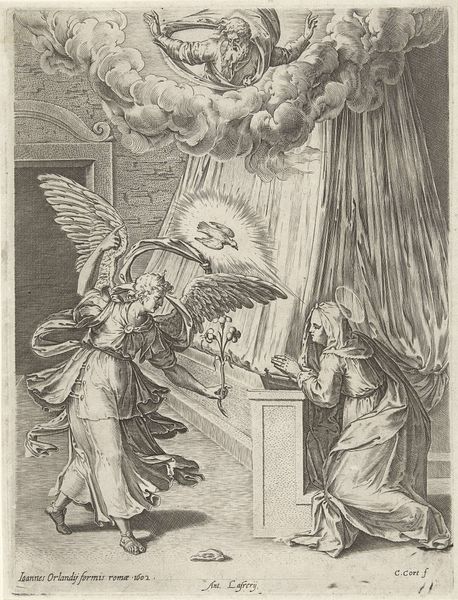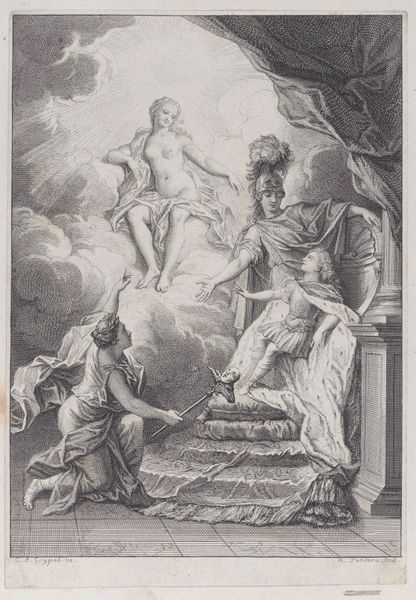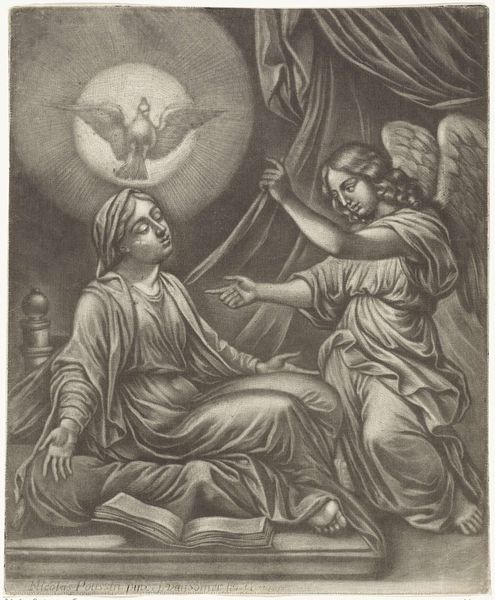
drawing, print, engraving
#
drawing
#
medieval
# print
#
figuration
#
history-painting
#
engraving
#
virgin-mary
Dimensions: Sheet: 3 3/8 × 2 3/8 in. (8.6 × 6 cm)
Copyright: Public Domain
Curator: We're looking at "Christ Appearing to His Mother," an engraving likely dating between 1578 and 1625, currently held at The Metropolitan Museum of Art. The inscription credits Iudocus Sadeler as the artist. What's your first take? Editor: There's such a powerful stillness about it, a palpable sense of quiet suffering. Mary is so contained, and even Christ seems to approach with a gentle hesitancy. Curator: It’s interesting to consider the context of engravings during this period. Prints like these allowed for wider distribution of religious imagery, particularly during times of religious conflict. This scene, Christ's appearance to Mary after the Resurrection, isn't explicitly in the Gospels, but grew in devotional art. Editor: It's intriguing how this scene becomes so important despite its absence from the canonical texts. This really emphasizes the role of popular piety and the lived experiences, especially those of mothers facing immense grief and the solace they sought. Mary becomes an archetype of resilient motherhood here, experiencing divine communication and understanding. Curator: Absolutely. The iconography is also revealing. Notice how Christ is emerging from these swirling clouds, emphasizing his divine nature. This highlights a time when visual narratives were essential for religious instruction and affirmation. Also the cross beside them signals the promise of salvation. Editor: I’m drawn to Mary's gesture of hands clasped. Is it devotion? Fear? Is she understanding of what the future entails now that her son is here? What would be her place in his ministry and beyond? She is presented as an exemplary model of submission, yet within that there is also so much room for interpretation about a female perspective. I wonder how viewers over the centuries interpreted it. Curator: Thinking about the print's purpose, one has to remember this wasn’t high art for wealthy patrons. It was mass produced—relatively speaking—to reinforce and visualize particular theological arguments within a changing religious landscape. Editor: It really serves as a potent reminder how deeply entrenched and socially engaged art always has been in faith. The nuances within art forms can either oppress or uplift those who are experiencing its emotional depths. This makes the artwork more compelling. Curator: Yes, thinking about this print beyond the confines of art history brings to light the artwork’s intersection with cultural expectations and religious fervor. Editor: It certainly moves one beyond art and touches lives and lived experiences across cultures and centuries.
Comments
No comments
Be the first to comment and join the conversation on the ultimate creative platform.
